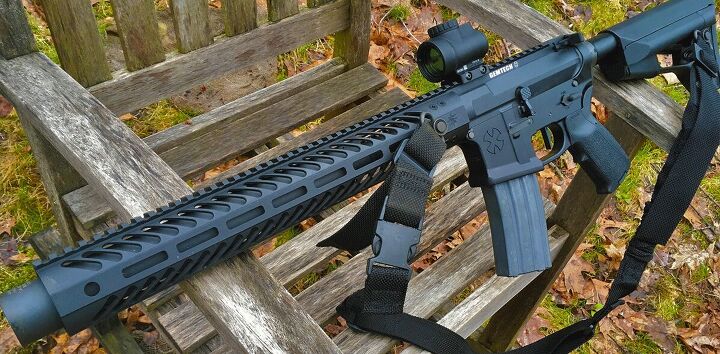To say that firearms optics technology has advanced in the last decade would be an understatement. Sure, it’s all relative – the original jump from iron sights to optical magnification must have seemed to the marksman of the day like peering into the future. But as current technology marches on, the miniaturization of electronics and the optical clarity of lenses grows at an amazing pace. Although, the Trijicon MRO isn’t a new addition to the market, it is rapidly gaining ground on competitors due to it’s solid performance and affordable price point.
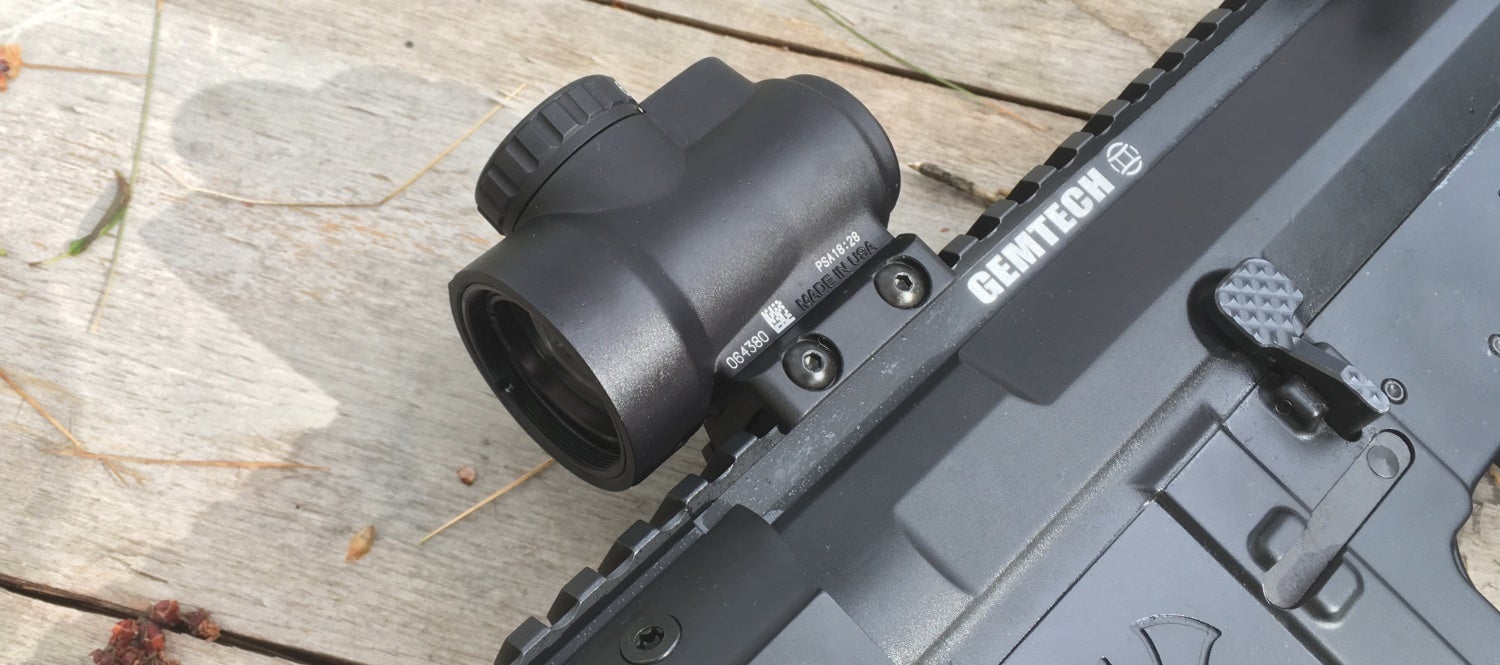

Here are my standard review disclaimers: This will be an overview of the Trijicon MRO, intended to give you a brief look at it’s features, specifications and possible applications. After you finish reading my post (if you can stomach the whole thing) you should have some idea of how the MRO would fit into your optics requirements. Although I have owned many red dots over the years, I am not an expert. Before purchasing any optic, especially those in the $500+ price range, you should make a point to actually handle and look through one at your local shop.
If you are shopping for your first red dot, I urge you to research astigmatisms and visit your optometrist to ensure you have an updated eye exam/prescription. Many buyers of high end glass (myself included) can be disappointed when their new optic doesn’t perform as described, only to find out that it’s their eyes that are defective and not the product. TFB talked about the issues of astigmatisms and red dot optics last year.

Now that we have the boring stuff out of the way, lets get into the numbers.
Trijicon MRO Specifications
- LARGE VIEWING AREA:
- Allows faster target acquisition and engagement with reduced “tube effect.”
- AMBIDEXTROUS BRIGHTNESS CONTROL:
- Brightness dial is equally usable by leftor right-handed operators without having to remove hand from fire control.
- ADJUSTABLE BRIGHTNESS SETTINGS:
- Eight brightness settings, including two night vision-compatible settings with a mid-position “off” feature.
- EASY-TO-SET ADJUSTERS:
- Adjusters provide positive-click reticle movement in ½-MOA increments and require no special tools for operation.
- AIRCRAFT-GRADE ALUMINUM HOUSING:
- Forged 7075 housing and fully sealed construction protects against the toughest elements.
- SUB-FLUSH ADJUSTERS
- Capless design eliminates lost caps, snag hazards and ensures against inadvertent adjustment or loss of zero.
- SUPERIOR QUALITY GLASS LENSES:
- Multi-coated lenses provide superior clarity and light-gathering capabilities with zero distortion and provide for a crisp dot reticle.
- PARALLAX FREE
- WATERPROOF TO 45 METERS (150 ft.):
- Dry-nitrogen-filled to prevent fogging.
- SINGLE LITHIUM BATTERY:
- Five years of continuous use at Day Setting 3 (setting 5 of 8) at 70°F with supplied CR2032 lithium battery.
- LIMITED LIFETIME WARRANTY:
- Electronics are warranted for 5 years from date of original manufacture
As you can see, the MRO is no slouch. The spec sheet reads like an optic that should cost $200 more than it’s price tag. But do these numbers translate to real world performance?

The red dots are my favorite dots.
Trijicon MRO – Initial Inspection:
First off, you’ll need to decide on a platform for your MRO so that you can pick a proper height mount. Factory Trijicon MRO mounts are available in three heights: low, co-witness, and lower 1/3 co-witness. If you don’t know the difference, let’s take a quick look.
- LOW – The MRO will sit as low as possible to the rail/bore line. Works best with no fixed front sight post
- CO-WITNESS – Designed so that the dot will sit atop your front sight post like a golfball on a tee
- LOWER 1/3 CO-WITNESS – Designed so that the front sight post will be in the lower 1/3 of the optics field of view when the dot is zeroed/centered.
“Most” shooters will opt for the co-witness mount height so that when backup iron sights (BUIS) are in use, the point of aim (POA) remains the same. I ordered a low mount because I wanted to run the MRO on a Brugger and Thomet (B&T) APC9 – the SB Tactical folding brace places the cheek weld low and along the rail. However, when I tested the MRO in the low mount on an AR platform, it was almost impossible to get a decent sight picture without a hideous head/cheek placement.
There are quite a few aftermarket mounts available for the MRO as well.

The MRO is a compact red dot sight with only three main adjustments, the first being windage and elevation.
Zeroing your MRO is about as easy as it gets. Simply use a small flathead screwdriver and adjust the dot based on point of aim vs point of impact. Remember, one click is 1/2 MOA; As a down-and-dirty reminder, one MOA at 100 yards is just a bit over one inch. So if I am zeroing at 50 yards (my preferred setup for a red dot on a rifle) one adjustment click should move the dot in the appropriate direction slightly more than a quarter of an inch.
For example, from the 50 yard line, if my POI is consistently off five inches low and five inches left, I would adjust elevation for 20-21 clicks up and 20-21 clicks right and then fire another five rounds to confirm zero.

I found the MRO’s windage and elevation adjustments to be painless and boringly accurate.

The remaining adjustment is the brightness settings. The MRO has eight illumination positions and two off positions in the following order (turning counterclockwise):
- OFF
- Night Low
- Night
- 1
- 2
- OFF
- 3
- 4
- 5
- 6
Outdoors, I ended up using the three and four positions, while my limited indoor use was primarily set at the two and three positions. My personal preference with red dots is to find a brightness setting that looks right initially, and dial it back one click. For me, the dot always seems to look crisper and cleaner with the least amount of brightness possible.

While we are talking about red dots in general, I have found that looking through the dot and at my target allows for a much better sight picture than just focusing on the dot. For “precision” work (a slight misnomer with dots) you can try to adjust the focal point back to the dot and check your results. And, just so we are clear, I keep both eyes open when running an optic like the MRO.
Light transmission in the MRO is excellent. What do I mean by that? Well, as I mentioned above, optics design is all about balancing trade-offs. Shooters appear to be clamoring for smaller and smaller glass, however smaller lenses reduce the light entering the optic and transmitted into the eye. Trijicon seems to have found a sweet spot by increasing the front lens size to maximize light transmission.

In combination with what appears to me to be superb glass, the additional light makes for a great sight picture. It’s a very clean and clear view with no no noticeable distortion.

As with all Trijicon products, the MRO is built like a tank. Now admittedly I didn’t torture my unit with feats of strength, vehicle rollovers and freeze-thaw cycles. However, if Trijicon applied their proven ACOG engineering to the MRO’s hardening, this unit should be able to handle anything I will throw at it. Which will most likely be spilled soda, Dorito dust and the occasional BBQ sauce smear. Life is tough downrange.

Shooting with the Trijicon MRO:
Strangely enough, except for the pictures, this section will be the shortest of the whole review. The MRO just plain works. Is it the perfect red dot? I doubt I am qualified to offer my opinion on that statement. But it does exactly what I want my optic to do: holds a zero and provides a perfect 2MOA aiming reticle. Does it sound like I am setting the bar too low? Nope, that’s all I want: no frills repeatability.



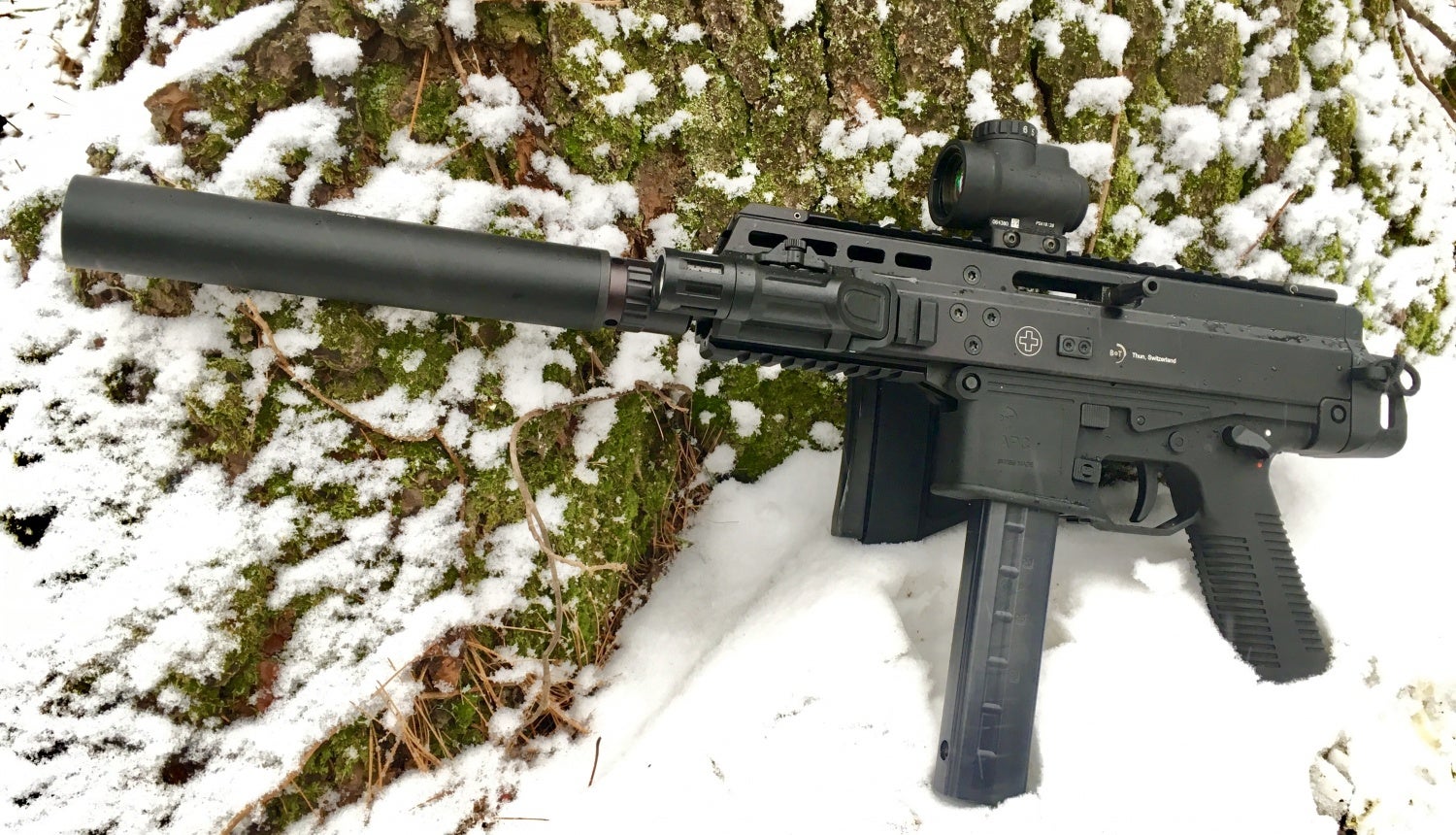

Ok, now for the detractors. With the brightness turned up, the laser can cause a halo effect around the objective. It’s not too distracting unless the brightness is set on six and even then a proper head position negates most of the effect.
Also, the LED emitter can be seen in the 11 o’clock position in the objective which can be a little annoying, changing my eyes focus from the target to focus on the front of the optic. Other red dots have the emitter at the six o’clock position, camouflaging it a bit into the mount/rail area.



Trijicon MRO – Conclusions:
The MRO is arguably the best value in miniature red dot optics in the current market. With more and more civilian shooters getting introduced to night vision, the MRO’s two dedicated NV settings will start seeing more use.The two MOA dot is both bright and crisp enough for close quarters and small and sharp enough for distance shots without obscuring targets. The brightness adjustments are definitive with no slop and the windage and elevation adjustments are accurate and repeatable.
On higher brightness settings, the red ring artifact around the objective can be a little distracting. Also, the LED emitter in the 10 or 11 o’clock position can draw your focal point away from the target.
However, no optic is perfect and each one has to walk a line between price, optical clarity, features and ruggedness. The MRO performs well in every category.
Cons:
- Red ring/halo on higher brightnesses
- Emitter at 11 o’clock position can be distracting
Neutral:
- Very slight bluish glass tint
Pros:
- Price – sub $500
- Performance – Trijicon
- Quality – Trijicon
I would like to take a moment to thank the good people of Brownells for the use of the MRO for this review. When it comes to shopping for guns, gear and tools, they are always one of my first stops.
Trijicon MRO at Brownells:
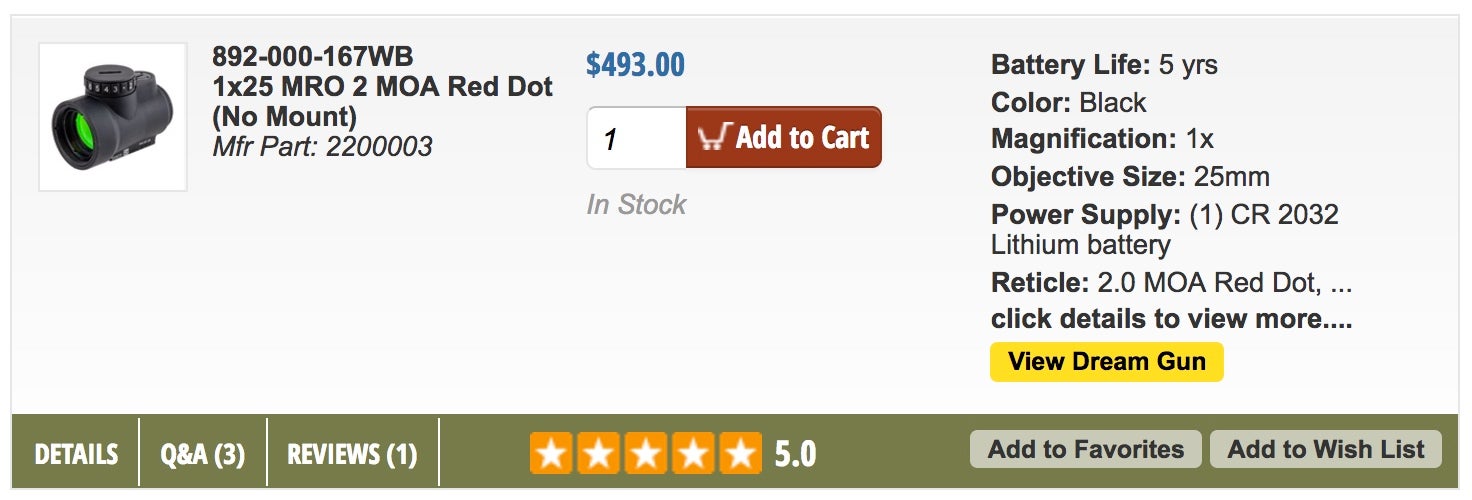
The Trijicon MRO™ (Miniature Rifle Optic) is a sealed miniature reflex sight intended for use on rifles, carbines and shotguns to provide fast target acquisition. The large aperture and tapered light path maximizes the viewing area and allows for better situational awareness and fast target engagement – especially from non-standard shooting positions. Combine all this with the ambidextrous brightness controls, sub-flush adjusters, advanced lens coatings and the fully sealed, waterproof, hard anodized forged 7075-T6 housing and you have the ultimate mini reflex sight on the market.
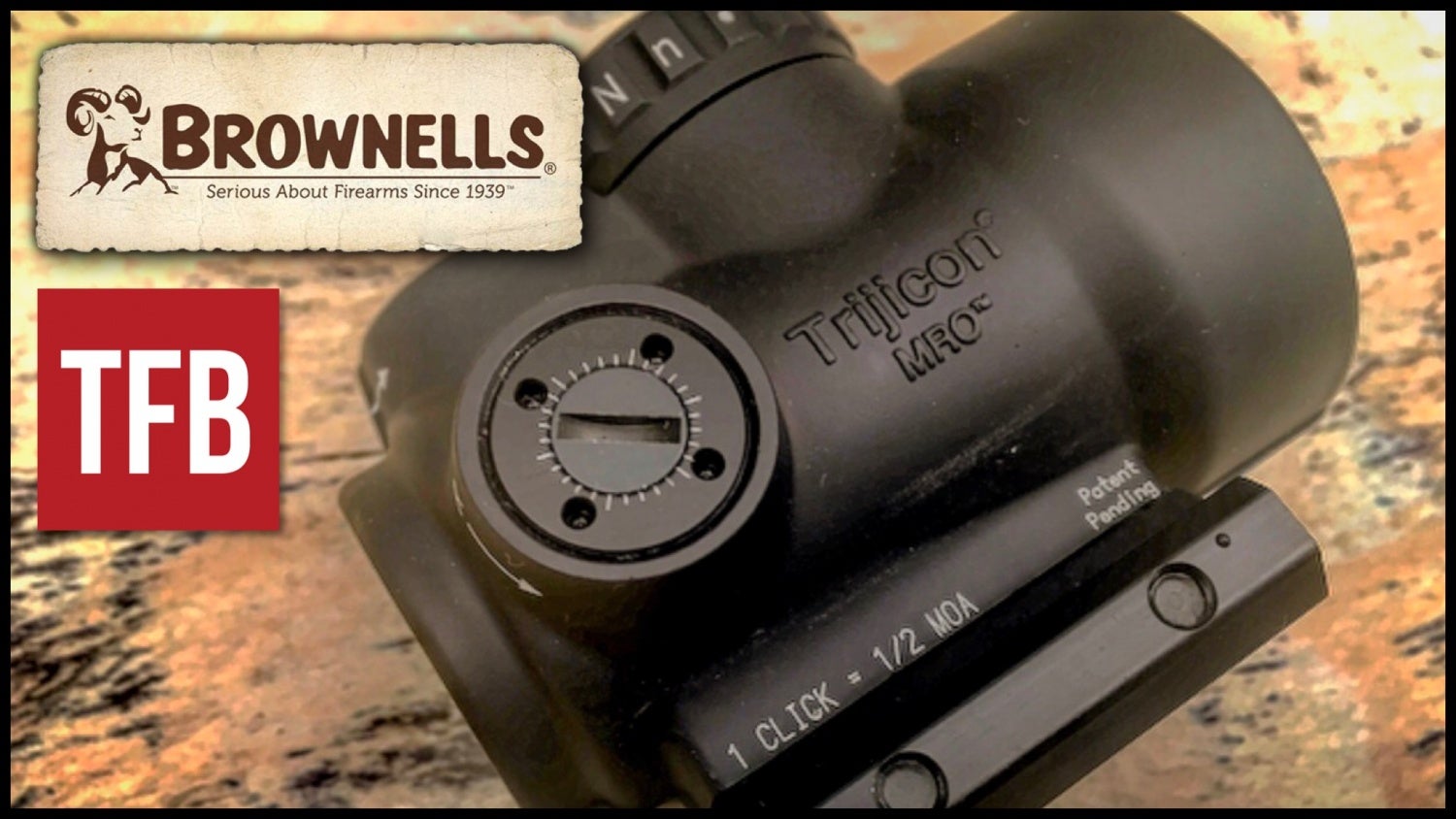
Special Thanks: Silencer Shop/Gemtech for the use of the Integra suppressed AR upper receiver.
Many thanks to Brownells for supplying the MRO for our test.

 Your Privacy Choices
Your Privacy Choices
